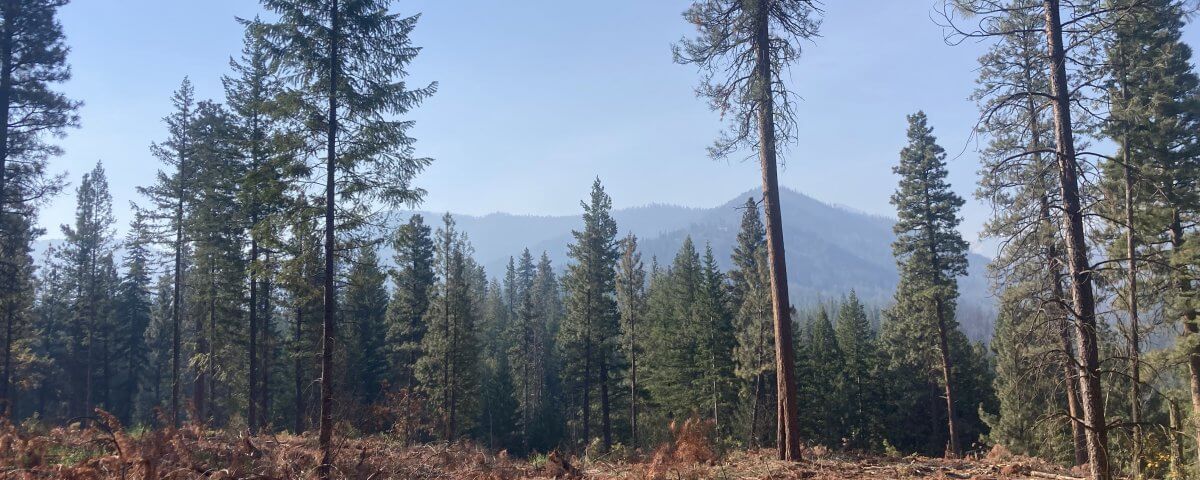Shifting the Paradigm: From Timber Harvest to Restoration

The Importance of Mule Deer Winter Closures
September 21, 2023
Some doubts, some optimism: A member’s takeaways from Forest Service field tours
October 26, 2023“The Okanogan-Wenatchee Restoration Strategy emphasizes a restoration paradigm where ecological outcomes for multiple resources drive the development and implementation of projects. This is different from the existing paradigm in which timber production targets often drive forest projects, while the needs of other resources are often overlooked”-from the Okanogan-Wenatchee National Forest Restoration Strategy
As a forest planning document, the Restoration Strategy for the Okanogan-Wenatchee National Forest provides an ecological approach to forest management which prioritizes long-term forest health over timber production. However, the way this strategy is implemented differs from forest district to forest district. While we have appreciated how far the Methow Valley Ranger District has come in adopting a restoration approach, they have also leaned heavily on two flexible management tools which have caused significant differences between what the Restoration Plan looks like when presented to the public and what it looks like once implemented on the ground. While MVCC strongly supports forest restoration as a whole, we would like to see some more transparency about how these methods–Designation by Prescription (DxP) and Condition-Based Management– are used going forward.
We encourage you to attend the Field Trips on these topics organized by the Methow Valley Ranger District to learn more and ask hard questions. The trips are September 30 and October 7 from 9:30-2:30pm. Pre-registration is required. Register here.
Designation by Prescription (DxP):
Designation by Prescription allows the Forest Service to save time in marking trees by allowing the contractor to use their judgment and cut to the written prescription. Although in theory this process could improve efficiency, from the comprehensive post-harvest monitoring report our Forest Field Specialist published last year we have seen that when timber sales are implemented with DxP, contractors routinely cut at or below the range of leave trees and don’t leave the largest trees standing. This is no surprise. Logging contractors are paid by the log they deliver to the sawmills—they are profit-motivated to cut as many trees as they are allowed to from commercial units. One way to prevent this would be to design logging contracts differently so the logging contractor does not get the logs they cut but rather a lump sum for carrying out the timber sale.
Another tried and true way to make sure the contractor is following the prescription is the practice of marking leave trees. This allows the professional foresters who wrote the prescription to mark it on the ground and prevents more trees from being cut than was planned on. As we know well, once a tree is cut it can’t be put back! If the Methow Valley Ranger District insists on continued implemention with DxP we would like to see thorough monitoring happening throughout the commercial harvests.
Questions to ask the MVRD at the DxP field trip on September 30th:
How do you ensure that contractors don’t just cut to the lower limit (or below the limit) of the DxP prescription as we saw happen in commercial units on the Mission Restoration Project?
Will careful monitoring be a part of restoration projects implemented with DxP?
What opportunities are there for members of the public to be involved in monitoring?
Condition-based Management
Condition-based management “allows for proposed treatments to be aligned-post-decision but prior to implementation-with current conditions on the ground.” This allows the Forest Service to adjust their logging prescriptions based on what they see on the ground instead of solely based on the Environmental Assessment that went through a public process to be approved. Although in practice this would allow for more flexibility, the lack of transparency about why changes are made and the unmet expectations in the Mission Project have shown this to be a tool that needs more honing.
We believe the Environmental Assessment, a document which thoroughly evaluates how the forest should be managed based on ecological and restoration objectives, should directly inform the prescription the Forest Service is following. While disturbances may require shifts, they almost always are significant enough to require a revisiting of the project as a whole (i.e. how Twisp Restoration Project was revisited after the Cedar Creek Fire). Where condition-based management is going to be used we would like to see the range of variation tightened to avoid surprises. Significant changes in field review should be presented to the public and additional review considered prior to implementation.
Questions to ask the MVRD at the Condition-Based management field trip on October 7:
How do you make sure there is accountability for the variability that condition-based management allows for?
Will significant changes to management based on conditions (a wildfire or other disturbance) be reported to the public?


